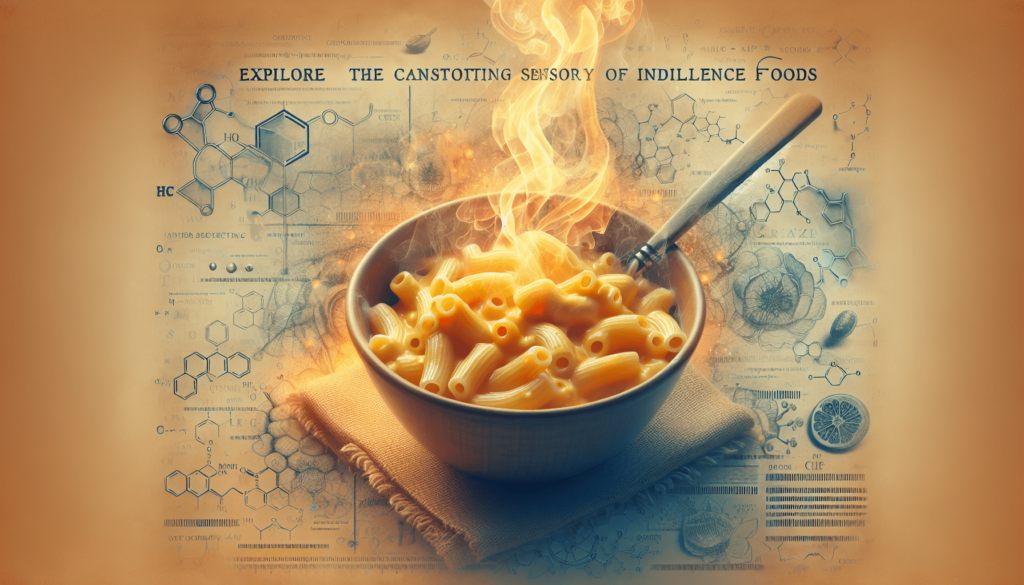Welcome to “The Science Of Comfort Foods: Why We Crave Them”! In this article, we will explore the fascinating reasons behind our overwhelming desire for comfort foods. From the physiological reactions in our brains to the emotional connection we have with certain foods, you will come to understand why these dishes hold such a special place in our hearts. So sit back, relax, and get ready to uncover the science behind your cravings. Have you ever wondered why you always seem to crave certain foods when you’re feeling down or stressed? You’re not alone. Many people turn to comfort foods like mac and cheese, ice cream, and pizza when they need a pick-me-up. But what is it about these foods that make us feel so good? Let’s explore the science behind comfort foods and why we crave them.

What are Comfort Foods?
Comfort foods are foods that provide feelings of nostalgia, warmth, and satisfaction. They are often associated with positive emotions and memories, making them a go-to choice for many people during times of stress or sadness. These foods are typically indulgent, high in fat, sugar, and carbohydrates, which can trigger feelings of pleasure and satisfaction in the brain.
Comfort Food Examples
Think of your favorite comfort foods – perhaps it’s a warm bowl of chicken noodle soup, a gooey grilled cheese sandwich, or a decadent slice of chocolate cake. These foods are often simple, familiar, and satisfying, providing a sense of emotional comfort when you eat them.
The Psychology Behind Comfort Foods
The allure of comfort foods goes beyond just taste – there is a psychological component that plays a significant role in why we crave them. When we eat comfort foods, our brains release neurotransmitters like serotonin and dopamine, which are associated with feelings of happiness and pleasure. This is what gives us that immediate sense of satisfaction and contentment when we indulge in our favorite comfort foods.
Emotional Connection
Comfort foods are often tied to specific emotions or memories from our past. For example, you may associate a certain dish with memories of your grandmother’s cooking or a special occasion with loved ones. These emotional connections can intensify our cravings for these foods, making them even more appealing when we’re feeling down or stressed.
Stress Relief
During times of stress, our bodies release cortisol, a hormone that can trigger cravings for high-fat and high-sugar foods. This is why many people turn to comfort foods when they’re feeling overwhelmed or anxious – the temporary relief they provide can help soothe stress and promote feelings of relaxation.
The Science Behind Cravings
Cravings for specific foods, including comfort foods, can be influenced by a variety of factors, including biological, psychological, and environmental cues. Understanding the science behind these cravings can help us make healthier choices while still satisfying our desire for comfort foods.
Biological Factors
Biologically, our bodies are wired to seek out foods that are high in fat, sugar, and salt. These foods provide a quick source of energy and activate reward pathways in the brain, making us more likely to crave them. Additionally, genetics can play a role in our food preferences and cravings, influencing our taste preferences for certain foods.
Psychological Factors
Our emotions and mental state can also influence our cravings for comfort foods. Stress, anxiety, boredom, and sadness can all trigger cravings for specific foods as a way to cope with negative emotions. This emotional eating can create a cycle of relying on comfort foods to feel better, which can be challenging to break.
Environmental Cues
External factors in our environment, such as advertising, social situations, and cultural influences, can also impact our cravings for comfort foods. Seeing a commercial for your favorite fast food restaurant or smelling freshly baked cookies can trigger cravings and make you more likely to indulge in these foods.
How to Enjoy Comfort Foods Mindfully
While it’s perfectly normal to crave comfort foods from time to time, it’s important to enjoy them in moderation and with mindfulness. Here are some tips for indulging in your favorite comfort foods without going overboard:
Portion Control
Instead of eating an entire pint of ice cream in one sitting, try portioning out a reasonable amount that satisfies your craving without overdoing it. Using smaller plates and bowls can help visually trick your brain into feeling satisfied with less food.
Savor the Moment
Take the time to fully enjoy your comfort food by eating slowly, savoring each bite, and appreciating the flavors and textures. Mindful eating can help you feel more satisfied and prevent overeating.
Choose Healthier Alternatives
If you’re looking to make your comfort foods a bit healthier, consider swapping ingredients for lighter options. For example, use whole wheat pasta in your mac and cheese or opt for Greek yogurt in place of sour cream in dips and sauces.

The Role of Nutrients in Comfort Foods
While comfort foods are often associated with indulgence and pleasure, they can also provide important nutrients that contribute to our overall well-being. Understanding the nutritional composition of your favorite comfort foods can help you make informed choices and enjoy them in a balanced way.
Macronutrients
Macronutrients, including carbohydrates, fats, and proteins, are essential for providing energy and supporting bodily functions. Comfort foods often contain a balance of these macronutrients, with an emphasis on fats and carbohydrates that deliver a quick source of energy and satisfaction.
Micronutrients
In addition to macronutrients, comfort foods can also provide essential micronutrients like vitamins and minerals that support our health. For example, a bowl of chicken noodle soup may contain vitamin C from the vegetables and protein from the chicken, both of which are important for immune function and overall well-being.
Breaking the Cycle of Emotional Eating
While comfort foods can provide temporary relief during stressful times, relying on them too heavily can lead to a cycle of emotional eating that can impact your physical and emotional health. Breaking this cycle and finding healthier ways to cope with stress and negative emotions is essential for overall well-being.
Identify Triggers
Pay attention to the situations, emotions, or thoughts that trigger your cravings for comfort foods. By identifying these triggers, you can develop strategies to cope with these feelings in a healthier way, such as practicing mindfulness, exercising, or talking to a friend.
Find Alternative Coping Mechanisms
Instead of turning to comfort foods when you’re feeling stressed or anxious, explore other ways to soothe your emotions. Engaging in activities like meditation, journaling, taking a walk, or practicing deep breathing exercises can provide a healthy outlet for managing stress and anxiety.
Seek Professional Help
If you find that your cravings for comfort foods are negatively impacting your physical or emotional health, consider seeking support from a therapist, nutritionist, or counselor. These professionals can help you develop coping strategies, address underlying emotional issues, and create a balanced approach to eating.
In Conclusion
Comfort foods can be a source of solace and pleasure during challenging times, but it’s important to enjoy them mindfully and in moderation. Understanding the science behind why we crave comfort foods can help us make informed choices and develop healthier eating habits that support our overall well-being. By practicing mindfulness, exploring alternative coping mechanisms, and seeking support when needed, you can break the cycle of emotional eating and find balance in your relationship with food. So go ahead, savor that slice of pizza or bowl of ice cream – just remember to enjoy it with awareness and appreciation.

